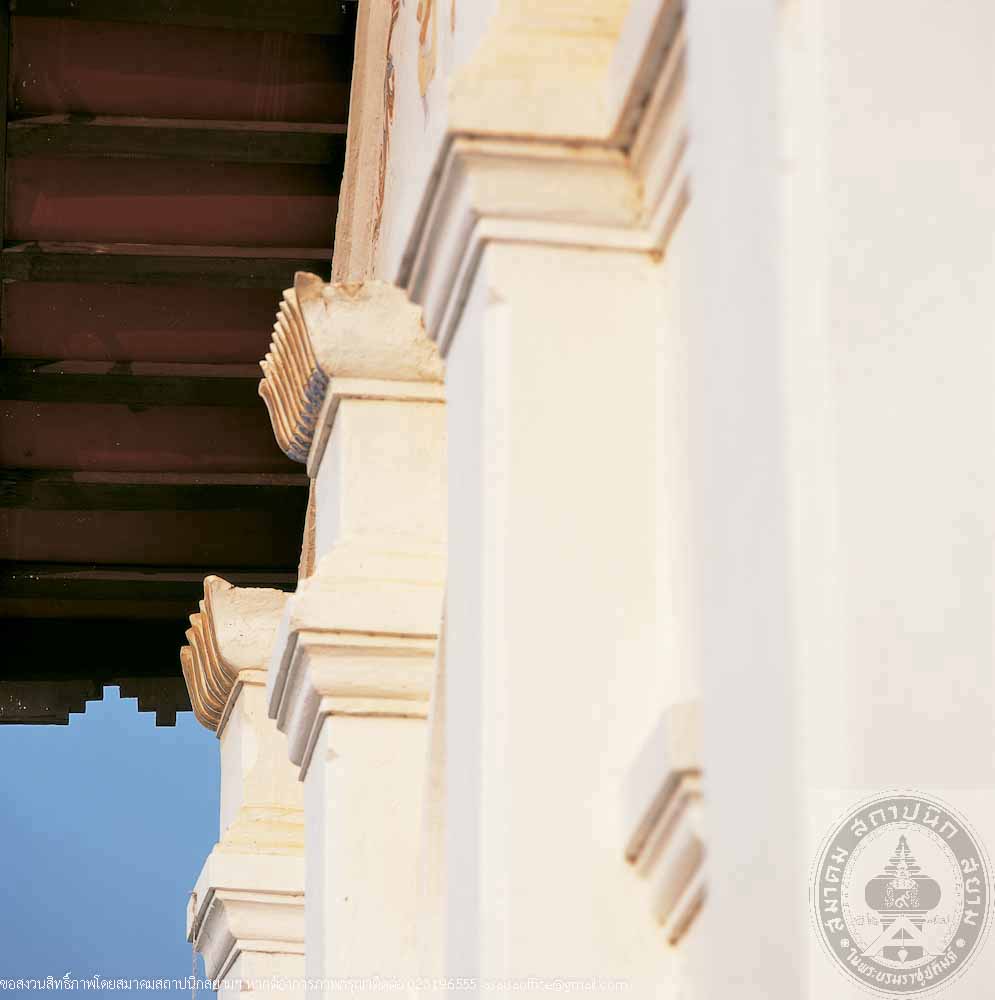สิมวัดพระธาตุเชิงชุมวรวิหาร
สิมวัดพระธาตุเชิงชุมวรวิหาร
ที่ตั้ง 1225 ถนนศรีสวัสดิ์ ตำบลธาตุเชิงชุม อำเภอเมือง จังหวัดสกลนคร
สถาปนิก/ผู้ออกแบบ -
ผู้ครอบครอง วัดพระธาตุเชิงชุมวรวิหาร
ปีที่สร้าง อาจเป็นรูปแบบเมื่อบูรณะปี พ.ศ. 2463
ปีที่ได้รับรางวัล พ.ศ. 2540
ประวัติ
สิมวัดพระธาตุเชิงชุม เป็นสิมโถงแบบพื้นถิ่นอีสาน ตัวอาคารหันหน้าทางทิศใต้ กล่าวกันว่าในสมัยรัชกาลที่ 5 ได้รับการประดับเพิ่มเติมด้วยซุ้มโค้งและลายปูนปั้นแบบฝรั่งที่นิยมในสมัยนั้น โดยผ่านทางฝีมือช่างญวน มีการตกแต่งด้วยจิตรกรรมแบบพื้นบ้านที่หน้าบันและผนัง
ตามประวัติศาสตร์กล่าวว่าวัดพระธาตุเชิงชุมสร้างขึ้นตั้งแต่ปี พ.ศ. 2240 แต่สิมคงมีอายุน้อยกว่านั้น สันนิษฐานจากรูปแบบสถาปัตยกรรมน่าจะเป็นยุครัตนโกสินทร์ แต่เดิมใช้เป็นที่ประกอบสังฆกรรม ปัจจุบันประดิษฐานรอยพระพุทธบาท 4 รอย ซึ่งหมายถึงพระพุทธเจ้า 4 พระองค คือ พระกกุสันธะ พระโกนาคมนะ พระกัสสปะ และพระโคตมะ
สิมนี้ได้รับการบูรณะครั้งแรกเมื่อ พ.ศ. 2463 โดยขุนอร่ามรัษฎากร และครั้งที่ 2 เมื่อ พ.ศ. 2539 โดยกรมศิลปากร อาจเป็นได้ว่ารูปแบบที่ปรากฏในปัจจุบันนี้ คือรูปแบบของการบูรณะครั้งแรกดังกล่าว

สิมวัดพระธาตุเชิงชุมวรวิหาร

สิมวัดพระธาตุเชิงชุมวรวิหาร

สิมวัดพระธาตุเชิงชุมวรวิหาร

สิมวัดพระธาตุเชิงชุมวรวิหาร
-

สิมวัดพระธาตุเชิงชุมวรวิหาร
-

สิมวัดพระธาตุเชิงชุมวรวิหาร
-

สิมวัดพระธาตุเชิงชุมวรวิหาร
-

สิมวัดพระธาตุเชิงชุมวรวิหาร
Sim, Wat Phra That Choengchum Worawihan
Location 1225 Si Sawat Road, Tambon That Choengchum, Amphoe Mueang, Sakon Nakhon Province
Architect/Designer Unknown
Proprietor Wat Phra That Choengchum Worawihan
Date of Construction Presumably 1920 AD., the date of restoration
Conservation Awarded 1997 AD.
History
Sim or ordination hall at Wat Phra That Choengchum Worawihan is an open building of vernacular Isan (Northeastern) style, facing south. It is said that the arches and stuccos were added during King Rama V’s period by Vietnamese craftmen.Decorations comprise mural paintings in local style on the pediments and walls.
History goes that the temple has been founded since 1679 AD. However, Sim, as indicated by its style, is presumably not order than Rattanakosin period. Its function was originally for religious activitives of the monks but at present, it is a place where the image of Four Buddha’s Footprint is enshrined, thus it is now serve as worshipping hall. The Four Buddhas in the past namely, Phra kakusantha, Phra Konakhamana, Phra Kassapa, and Phra Kotama.
The first restoration was carried out in 1920 by Khun Aramrassadakorn,and the second time in 1996 by the Fine Arts Department. It is possible that its present appearance derived from the date of the first restoration.